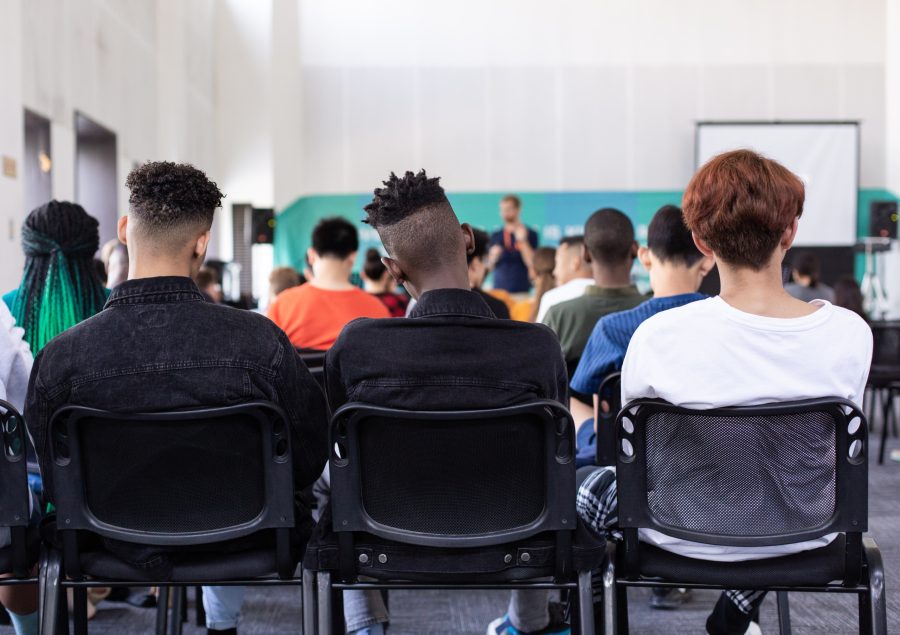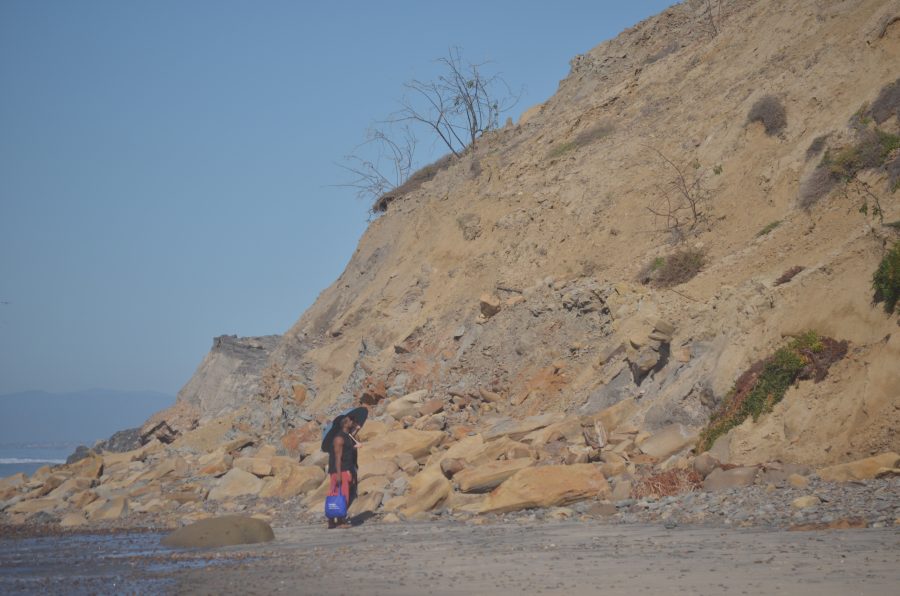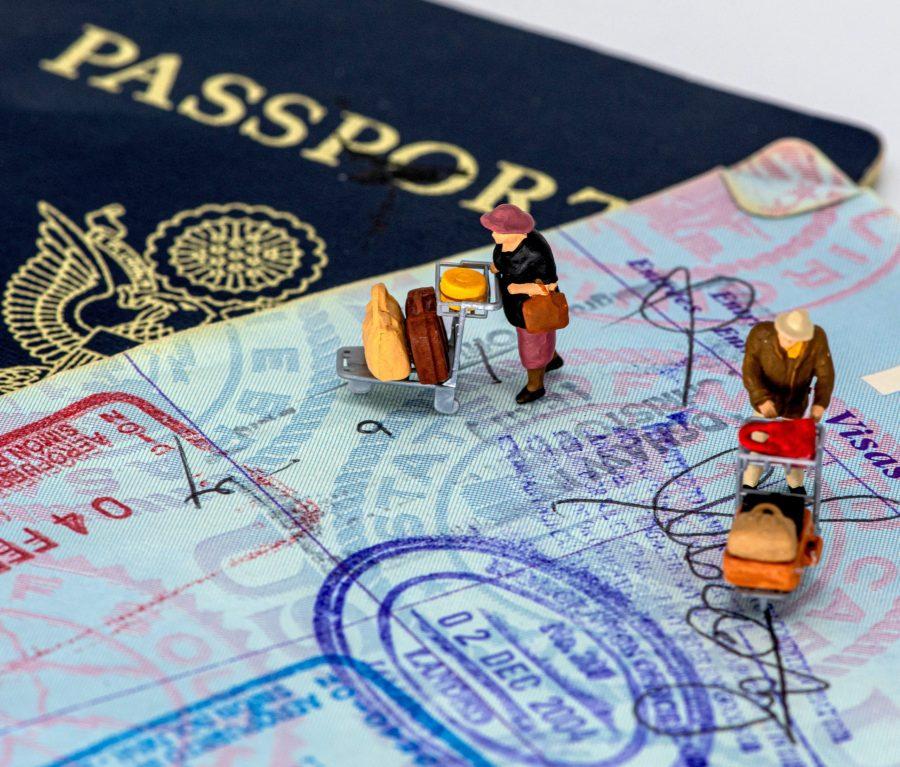For many students, going to UCSD without a set of wheels is akin to being caged in a giant, over-sanitized bubble.
And for those of us without an obliging friend with a car, the purple UCSD Free Bus Zone sticker is a get-out-of-jail-free card. Available to all undergrads at the Transportation Services Office, the sticker covers most local bus lines and is funded by our student fees, making it “free” for the school year. The 3, 10, 30, 41, 101, 150, 201/202 and 921 routes are all included.
For the precocious student, these bus lines are the ticket out of La Jolla, and will go as north as Oceanside and as south as Balboa Park and Old Town.
You’ve already dropped the green for it, so put it to good use (unlike that gym fee). Here, we list our top five spots to check out in the San Diego area — armed with nothing but your shoes, wallet and bus pass.
Torrey Pines Beach
Bus Stop: North Torrey Pines
Tucked away past the Torrey Pines Natural Reserve, just before the shops of Del Mar, Torrey Pines Beach is a beach bum’s isolated paradise. The beach is a long stretch of narrow, dark, grainy sand, yet it extends along the coast uninterrupted for so long as to appear never-ending. When facing the glittering ocean from a sun-soaked towel, you can see the coast stretching out to the south all the way to La Jolla. To the north, the shore rises into cliffs, cradling benches and trails with stunning snippets of horizon.
Best of all, Torrey Pines is largely devoid of the tourists you’d encounter at La Jolla Shores, making for a less hectic atmosphere. Though it’s not where the next “Animal House” or “Hangover” will take place (the majority of visitors at Torrey Pines are young families), the effect still isn’t marred by the presence of screaming tykes, or slow-moving old-timers.
To get to the beach (Torrey Pines is one of the easiest to get to by bus), take the NCTD 101 bus “The Breeze” from Gilman and Myers Drive for about 20 minutes. The bus drops you off at the top of a long cement ramp that gradually slopes right into the sand.
The bus line travels between UTC and Oceanside, and became free for UCSD students in 2007. The addition expands UCSD’s free bus zone by 31 miles. The 101 line is also useful for connecting to the Solana Beach Amtrak station.
Torrey Pines Reserve
Bus Stop: North Torrey Pines
With the best landscape to get your wild-thing on within spitting distance of La Jolla, the trails at Torrey Pines Reserve cover 2000 acres of land that remain largely untouched by civilization. Take the 101 line north, just as you would for Torrey Pines Beach, for about 20 minutes. Past the small visitor’s center — which details the cultural and natural history of the reserve — are eight miles of trails.
The park gates are open to the public from 8 a.m. until 5 p.m. every day, and on the weekends and holidays guided nature walks are available for free for up to 10 people. Torrey Pines is a day-use park, meaning there’s no camping or picnicking allowed. And in light of the $10 parking fee, the benefits of taking the bus far outweigh the convenience of driving — just jump right off the bus and head out to the sandstone and clay trails.
Wild flowers jut out of carved cliffs, and the natural pond shimmers nearby.
“The trails provide magnificent views of the ocean and of the reserve,” Revelle College sophomore Nick Oliver said. “You can get to many of the different trails that run through the park. Some of them even run down to the beach from the road.”
The reserve’s elevation ranges from below sea level to 300 feet. Park docent Stephanie Parkington recommends the Guy Fleming Loop. The trail, which spans two-thirds of a mile, is one of a few options for the beginning runner.
More challenging paths are also available — the 1.3-mile Broken Hill Trail can be combined with the Razor Point and Beach Trails to form an expansive three-mile loop. Most of the trails provide access to unspoiled beaches along the way, and each presents stunning views.
Garnet Avenue
Bus Stop: Felspar St. and Mission Blvd.
The shops, salons, bars and clubs on Garnet Avenue offer a wide range of activities for a smaller range of people — namely college students and bar rats. Get off at Felspar Avenue and Mission for prime access.
At midday, Pacific Beach is still in a hangover lull, inviting visitors to explore at their own pace. It’s an interesting contrast to the avenue’s atmosphere once the sun sets — before the dive bars and nightclubs begin to pump music and fill the air with the tantalizing smells of Taco Tuesdays.
This street is lined with attractive boutiques, cafes, surf shops, coffee shops, salons and a Trader Joe’s.
“Pacific Beach is a really awesome place if you know where to go,” Revelle College senior Jenny O’Hara said. “You can go big and go to the hot spots like the Tavern and Typhoon Saloon. [But] the best places in PB are the ones that only the locals know about. Cass Street Bar and Grill and Thrusters are the best places to go if you’re looking for a fun night out with a couple friends.”
Cass Street, a PB standard with good beer, fried food and shuffleboard, is conveniently close to the Felspar bus stop; Thrusters, a laid-back lounge with nightly DJs and dancing, is a few streets down from Garnet at Emerald Court. Typhoon Saloon is one of the busier, more mainstream clubs of Garnet Avenue. According to manager James Greon, students should get to Garnet early on Tuesdays to avoid being left out in the cold.
“The busiest nights are probably Taco Tuesdays, and the crowd always consists of students and young adults,” Greon said. “Students can even use their school IDs on Thursdays and sometimes Fridays to get into the VIP lounge.”
PB is best suited for those over the legal drinking age, but the variety of restaurant fare still draws an underage college crowd.
Prospect St./Girard Ave./La Jolla Cove
Bus Stop: Silverado St. and Herschel Ave.
Just 15 minutes away on the 30 are the abundant shops of Girard Avenue, the fine dining of Prospect Street and the picturesque La Jolla Cove.
Girard Avenue can err on the pricey side (like the LF boutique and Let’s Go, where a measly T-shirt will set you back about $50), but certain shops are friendlier to student budgets. The cheapest is Pink Zone, which offers a wide selection of women’s clothing at low prices. Lucky Brand Jeans, the Gap and other reasonable brands line the side streets.
Revelle College sophomore Justin Yuan said that Girard Avenue has a variety of options.
“I used to take the 30 line down to Girard and go to La Jolla Music,” Yuan said, “It’s a small music store that I really like for its atmosphere. It’s quiet and the employees aren’t annoyingly attempting to sell you stuff you don’t need, like at [Grossmont’s] Guitar Center. I’d purposely not buy multiple packs of classical guitar strings just so I could go back and look around.”
Close to Girard, you’ll find Prospect Street, a picturesque road that winds its way along the coast. The upscale street might seem overwhelming, as it’s dominated by high-end restaurants, hotels and art galleries. But Warren College sophomore Vinh Diep explained that there are student-friendly destinations on Prospect as well.
“On Prospect, you have to go to the Peter Lik photography gallery; there’s all kinds of crazy, awesome shots from all over the world that’ll blow your mind,” Diep said. “I also like to stop at the Rocky Mountain Candy Factory and get caramel apples.”
The candy shop is a one-stop shop to feed your sweet tooth. From the Chocolate Factory to Gelateria Frizzante, Prospect’s selection of delectable desserts is impressive.
Restaurants worth dropping dimes at include Sushi on the Rock, Smashburger and Jose’s — so use the money you saved on gas to buy some grub outside of OVT’s phosphorescent walls.
Just below Prospect Street, La Jolla Cove affords an incredible view of the Pacific. The Cove also has a lush, grassy park — perfect for picnics and tossing around a Frisbee. Below the scenic park are the tide pools, littered with sea anemones, starfish and crabs.
While small, the beach is a prime spot for snorkelers who explore the cove looking for garibaldi fish and swim alongside the sea lions and seals who frequent the area.
Balboa Park
Bus Stop: 30 to Old Town transit, 10 to University Ave and Park Blvd,
7 to Park Blvd and Village Place
If you’re looking more for arts and culture than beach-side bars and bros, head to Balboa Park in downtown San Diego. Be sure to budget about an hour and a half travel time each way on the 30 South, the Blue Line or the 7, though the Park Boulevard exit will drop you off right in front of the entrance.
The park itself is open every day and is free, but getting into the museums (around $6), plays ($40 and up), zoo ($40) or other attractions requires a ticket. Grassy fields flank the entrance — a long bridge that runs over the freeway, ending in towering Spanish Revival style stone arches, welcoming impromptu picnickers or smog-choked bus riders to lounge around.
“The best memories I have of Balboa Park would have to be tossing a Frisbee around the disc gold course with friends, or listening to the soothing music at the organ pavilion,” Revelle College sophomore Mike Adsit said.
About 20 museums lie inside Balboa’s boundaries, most of which line the park’s main walkway alongside water fountains and potted plants, like the Japanese Friendship Garden and the Museum of Man (which offers free entrance for Making of the Modern World 1 students). The park also houses the San Diego Zoo, tennis and golf complexes and a working theater that’s an exact replica of the Globe, plus a few moderately priced restaurants and cafes.







